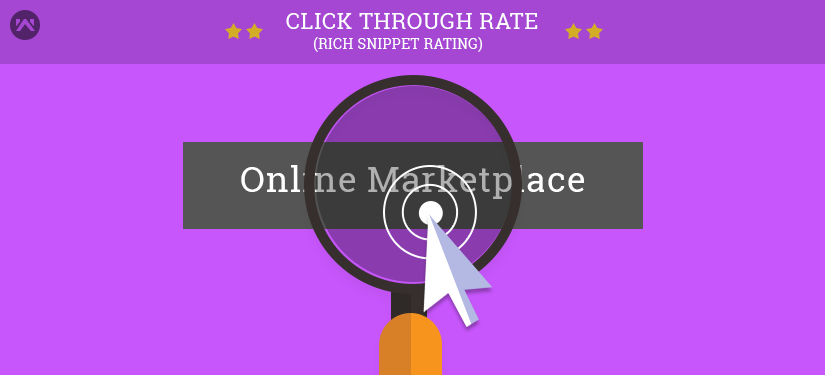A snippet can be defined as a small piece of information or details obtained from your website. This is the first thing that attracts the user’s attention to the SERPs (Search Engine Results Pages).
Therefore, the snippets have to contain the best possible information about your website. A snippet containing every minute detail that a user looks for is called a Rich Snippet.
Rich Snippets mainly includes a brief description of the webpage and its content, the price, and availability of products, reviews and ratings, and other such information.
Thus, giving users an overview of the main information relevant to the webpage.
The term ‘Rich Snippets’ is used to describe Structured Data Markup that website developers can use with their existing HTML code.
This allows search engines to better understand what information is contained on each web page.
Rich snippets are a way of providing additional information in the SERPs that makes it easier for the users to find and get exactly what they are looking for.
This in turn often increases the click-through rates for the websites.
Rich snippets – we see them everywhere in the SERPs. Rich snippets help you, the website owner, in differentiating yourself from other competitors in the market.
By providing users with more attractive and informative search results irrespective of the search engine used.
For the average searcher, these rich snippets help show them what they’re searching for is within reach on a particular site.
Benefits of using Rich Snippets
-
Drawing a user’s attention to your relevant result.
-
Providing instant information related to customers’ queries.
-
Increase the click-through rate and lower the bounce rate in Google, Bing and Yahoo searches.
-
Improve organic traffic by offering eye-catching search results.
-
Display website breadcrumbs in Google, Bing and Yahoo search results.
-
Display the lowest price, average rating, and availability in SERP.
-
Include product rating when sharing pages on social networks.
As in Google words itself
“When you use structured data to mark up content, you help Google better understand its context for display in Search, and you achieve a better distribution of your content to users from Search.
You do this by marking up content properties and enabling actions where relevant. This makes it eligible for inclusion in Rich Cards and Rich Snippets.
For some content types, it allows users to engage directly with your content right from Search.”
Rich Snippets Simulates Click-Through Rate
With so many ads, videos, and images ranking in SERPs, it is difficult to attract users with the plain old text that is shown in the normal Snippet area.
Using Rich Snippets is a kind of value addition through which meaningful information is visible to your webpage search result
So attracting users by showing them all the relevant information about the webpage on the search result page only that the users might be looking for, not only giving the user an insight into the webpage.
Also encourages the users to go through the link and hence increases the Click Through Rate of your website.
It is the most avoidable thing for any e-Commerce website. If Google detects some of the marks on your pages to be using some techniques that are outside Google’s structured data guidelines.
For example marking up content that is invisible to users, marking up irrelevant or misleading content, and/or other manipulative behaviour, then Google will penalize your website and you will have to face a lot of loss.
The more you avoid rich snippets spamming the more you get the profit or you can say loyal traffic to your website. Rich Snippets Spamming increases the bounce rate of the website and Google will also put a penalty for this crime.
How to Implement – Rich Snippets
To add rich snippets for your website you will need the right schema markup on your pages. This allows Google to understand the data which you want to show in your rich snippet.
The Schema.org website will help you explore the range of structured data options available.
Schema markup is written using HTML5 so you don’t need to learn a whole new coding language – common tags, such as <div> and <span> are used.
AMP with Structured Data
AMP pages with structured data can appear in a carousel of rich results in mobile search results. These results can include images, page logos, and other interesting search result features.
Here are some of the use cases for Rich Snippets for the Marketplace websites:
Rich Snippets for CMS
You can add rich snippets to your CMS pages, such as Blog, About, and Contact Us.
Rich Snippets for social media
Add Open Graph meta tags in order to provide richer content and higher click-through rates in URLs shared on social networks.
Rich Snippets for category pages
Display ratings and category descriptions in search results.
Rich Snippets for product pages
Let your customers see prices, special offers, availability, product images, reviews and limited offers directly on search results pages.
Breadcrumbs
Display the page’s hierarchy in search results, e.g. Company > Category > Subcategory > Product.
Rich snippets are indeed the best to help you flaunt your webpage within the small space that you get in SERPs.
A normal Google result only allows a couple of words in your page title and a couple more in the meta description to appear in the SERPs.
So there isn’t much information available to help convince a user to click through to your website. Rich snippets give you the opportunity to attract those additional clicks.
That is all for this article on Rich Snippet for Marketplace & AMP. So, if you want to start soon, then get in touch with our team over email, ticket or chat.







Be the first to comment.